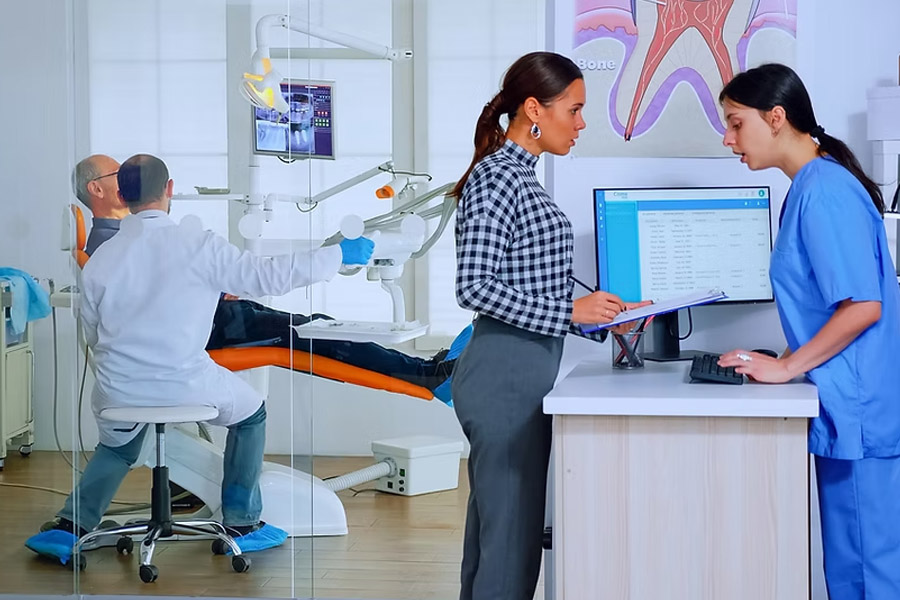Now Reading: Why Dentists Are Hiring Virtual Assistants to Manage the Chaos
-
01
Why Dentists Are Hiring Virtual Assistants to Manage the Chaos
Why Dentists Are Hiring Virtual Assistants to Manage the Chaos

The secret stress behind the dental chair
Sit with me for a moment: the drill hums, a patient breathes through a paper bib, and somewhere in the background a line of administrative tasks snarls like traffic during rush hour. Modern dentistry isn’t just clinical craft anymore; it’s a juggling act where clinicians double as clinic managers, HR directors, insurance navigators, and tech troubleshooters. Between crowns and cleanings, dentists are expected to answer phones, chase down pre-authorizations, reconcile billing, and babysit appointment sheets. It’s exhausting. And when the office is short-staffed or turnover spikes, that exhaustion turns into a slow, steady erosion of both joy and efficiency.
The real cost isn’t just dollars. It’s interrupted patient care, delayed procedures, and clinicians who go home replaying the chaos instead of unwinding. That’s where the story gets interesting: the solution some practices are quietly adopting isn’t another receptionist, it’s a remote ally—skilled, steady, and online.
Enter the virtual assistant: the digital sidekick dentists didn’t know they needed
Think of a Dental Virtual Assistant as the backstage crew for a big production—never in the spotlight, but essential to the scene. These are trained administrators who live in the cloud but plug directly into dental workflows: confirming appointments, responding to patient inquiries, verifying insurance eligibility, and nudging patients for follow-ups. They know the lingo—occlusal, prosthesis, perio—and can move through systems like Dentrix, Eaglesoft, or Open Dental with practiced ease.
Because they operate remotely, dental VAs bring consistency that local hires often struggle to match, especially in high-turnover environments. They’re available for predictable shifts, they don’t require office space or onboarding to the same degree, and they grow into the practice’s routines—so your front office isn’t constantly in training mode.
Why this saves sanity (and money)
Hiring is expensive. Full-time front-desk staff require wages, benefits, training, workspace, and management. A remote assistant typically arrives via a service provider that absorbs much of that overhead. That means lower direct costs and fewer HR headaches for the practice owner.
But the savings run deeper. When clinical staff stop answering non-clinical calls or digging through billing notes during lunch breaks, they can focus on patients. Productivity rises. Patient calls are answered faster. No-shows drop thanks to timely reminders. There’s psychological relief, too: clinicians report less burnout when the administrative noise is taken off their plate. The numbers on the spreadsheet start to look better, and the morale in the operatory feels lighter.
What dental VAs actually do day-to-day
The work looks deceptively simple until you watch it done well. They send texts and email confirmations, triage incoming messages so emergencies get immediate attention, verify insurance details before procedures, and handle pre-authorization follow-ups. They can pull together charts, prepare recall lists, manage online forms, and even run patient satisfaction surveys. In multi-location practices, a single VA or team of VAs can provide consistent support across branches and time zones, smoothing operations without the need for duplicate hires.
Because these assistants are trained specifically for dental workflows, they don’t need to learn basic terms or systems from scratch. That translates into faster onboarding and fewer errors—an underrated but critical benefit in a field where details matter.
Scaling up without chaos
Growth stresses systems. Add a second office, a new hygienist, or an expanded list of cosmetic services and suddenly the back end needs to catch up. Virtual assistants scale with practices in a way local hires often can’t: they can pick up extra shifts, support additional locations, and provide specialized functions like insurance follow-ups or patient recall campaigns.
This remote-first model also makes it easier to implement digital conveniences that patients now expect—text reminders, online intake forms, and rapid response windows—without forcing the on-site team to take on new tasks. The practice looks modern and responsive, and the team stays focused on clinical excellence.
Patient experience and the digital expectation
Patients increasingly expect convenience: quick replies, online scheduling, and painless check-in processes. Dental VAs help deliver that experience consistently. They can be the face of the practice’s digital front door—answering pre-visit questions, smoothing billing confusions, and ensuring follow-ups actually happen. That seamlessness shows up in patient satisfaction, reviews, and referrals: when administrative friction is low, the whole experience feels more polished.
Digital-savvy practices don’t lose the human touch; they sharpen it. The clinical team spends more time on meaningful interactions and less time on admin minutiae.
Is this the future of dentistry?
Many practices are already testing this playbook because the benefits are tangible: lower overhead, steadier workflows, less burnout, and happier patients. It’s not about replacing the in-person team; it’s about augmenting it so dentists can keep their attention where it belongs—on care, not calendars. As telehealth normalized remote collaboration, virtual assistants are the next logical piece of a digitally mature practice.
FAQ
What tasks can a dental virtual assistant handle?
A dental VA can manage appointment confirmations, patient communications, insurance verifications, recall lists, and basic billing follow-ups to keep the office running smoothly.
Will a virtual assistant replace in-office staff?
No—VAs augment the on-site team by handling repetitive administrative work, allowing in-office staff to focus on patient-facing duties and clinical tasks.
Are dental VAs trained in dental software?
Yes, many dental VAs are familiar with common practice management systems like Dentrix, Eaglesoft, and Open Dental, which speeds onboarding and reduces errors.
How does hiring a VA save money?
A VA reduces the need for full-time hires by cutting wages, benefits, workspace, and training costs, while also improving staff productivity and reducing turnover-related expenses.
Can virtual assistants support multiple locations?
Absolutely—VAs can work across offices and time zones to provide consistent administrative support as the practice scales.
Do patients notice when a practice uses a VA?
Patients typically notice improved responsiveness and smoother scheduling, which often translates into better satisfaction and fewer missed appointments.





















